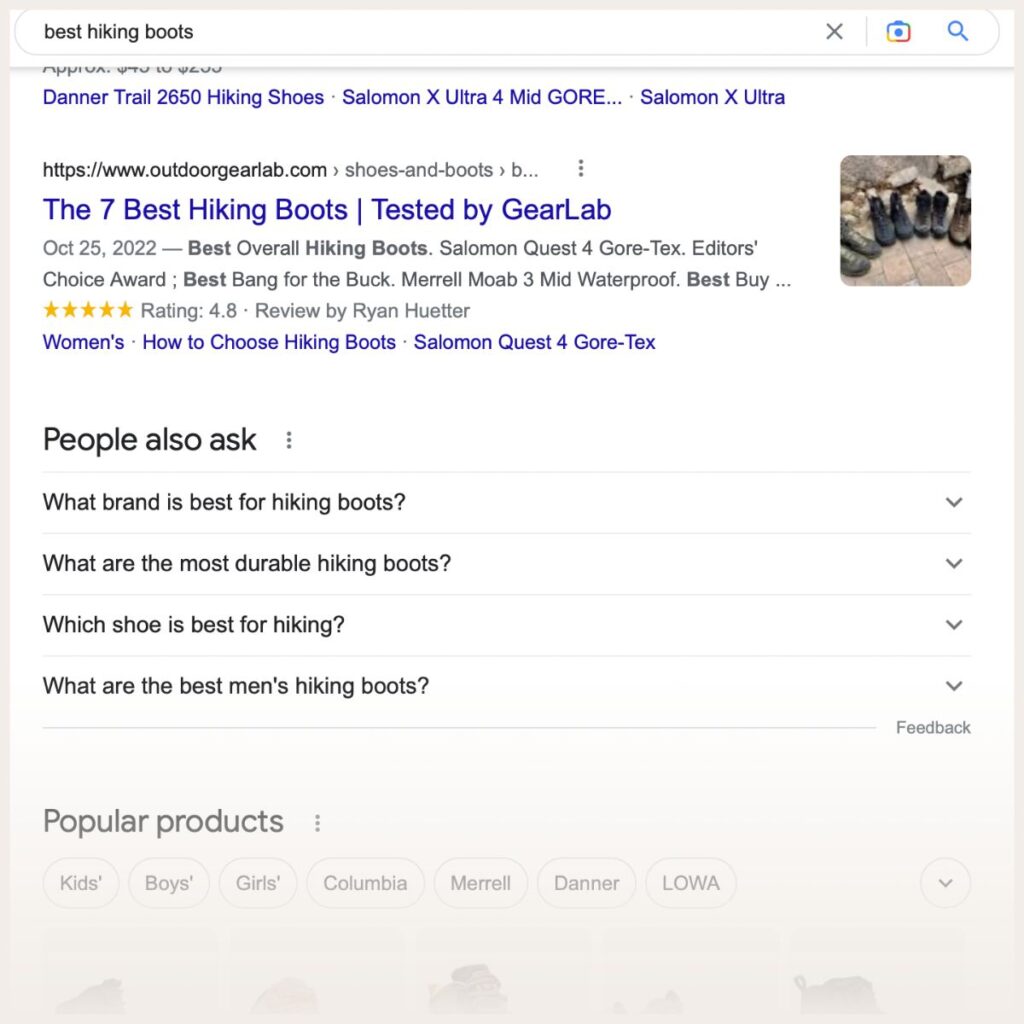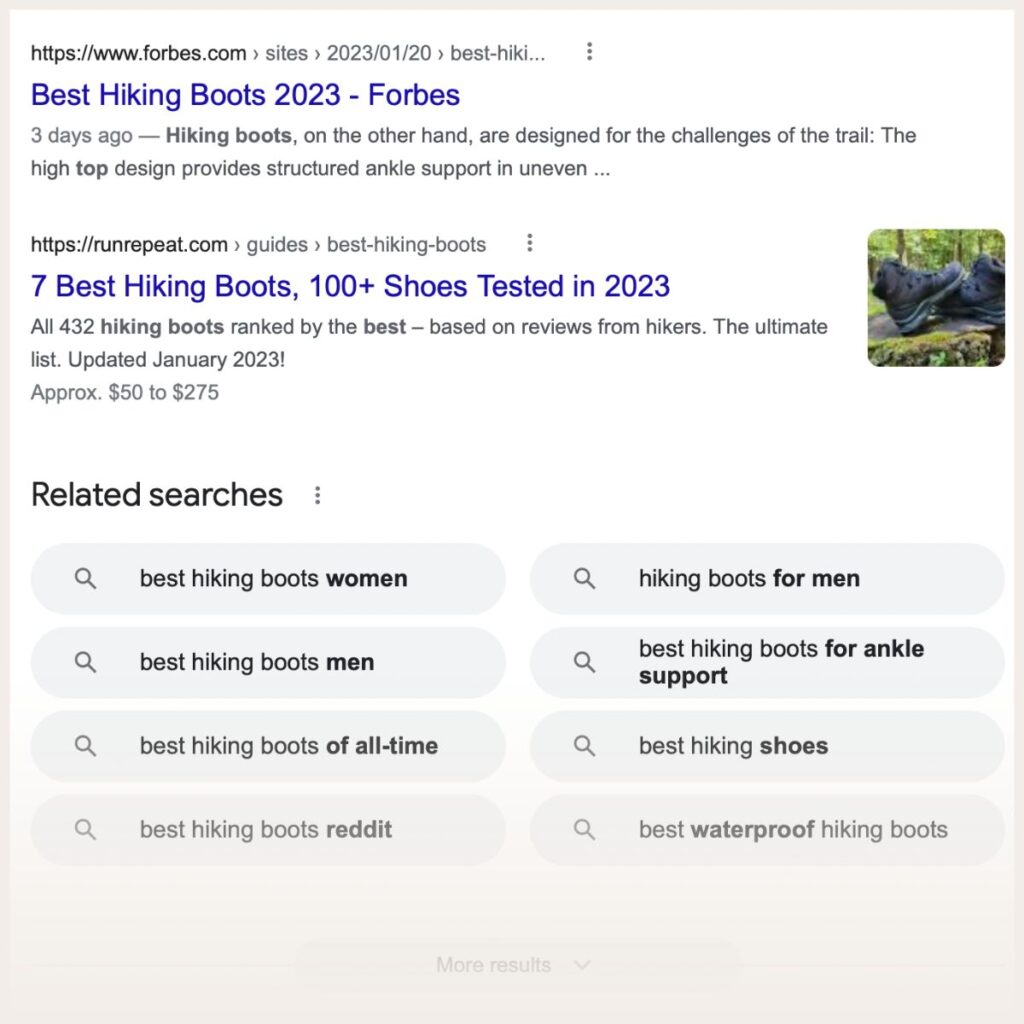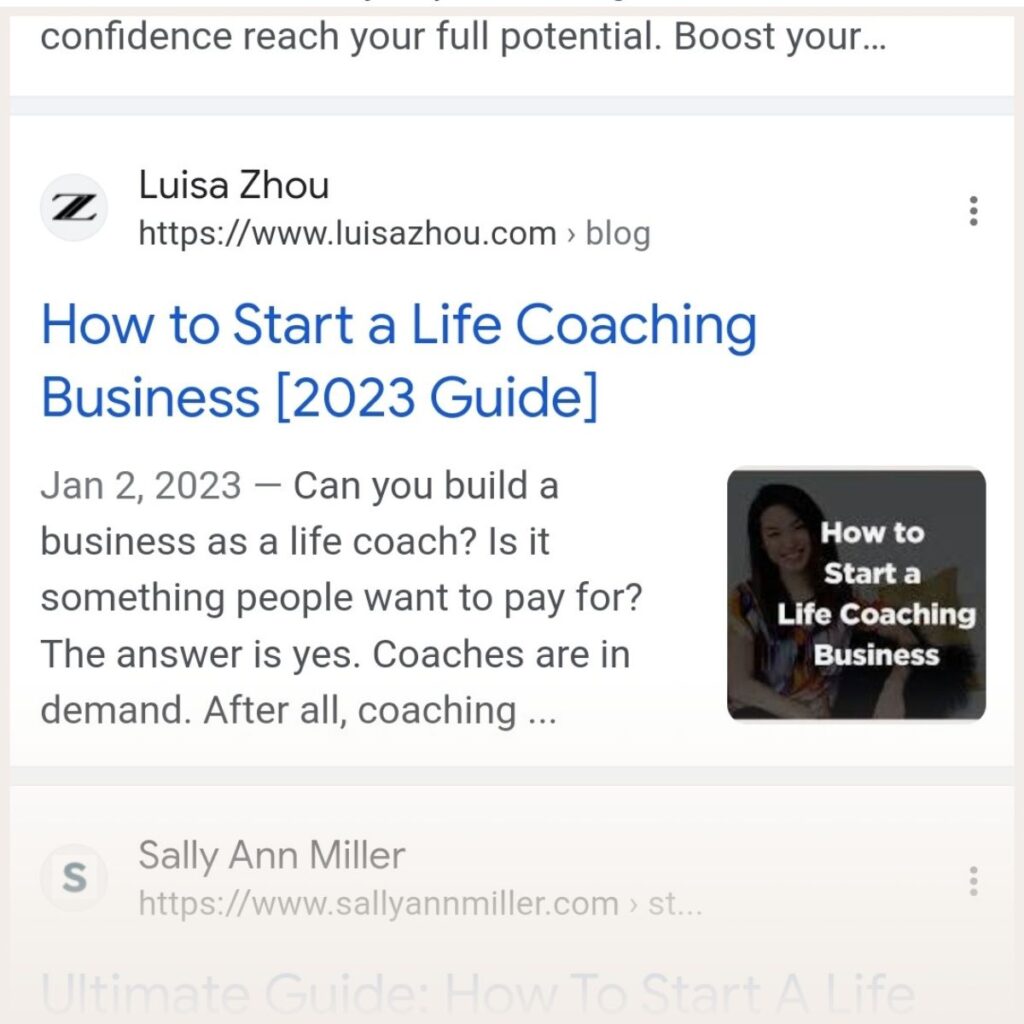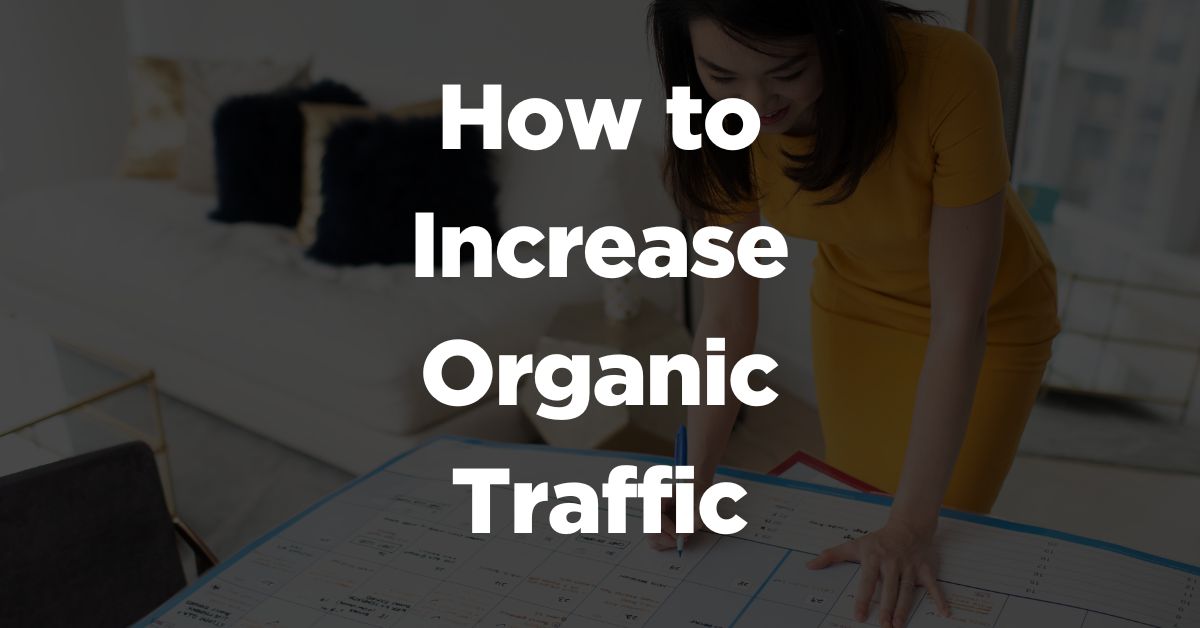This is the ultimate guide on how to increase organic traffic.
Organic traffic is one of the most profitable ways to scale your business. But growing your organic traffic can be incredibly daunting.
That’s why I put together this guide – to help you stop wasting time on tactics that don’t work and take the steps that do.
So if you’re ready to increase your sales, read on.
You’ll learn:
- What is organic traffic?
- How do you get more organic traffic?
- Why are you NOT getting organic traffic?
- Should you buy organic traffic?
What is organic traffic (and why is it important)?
Organic traffic refers to the visits you get to your website from unpaid (organic) search results.
In other words, these are people who find you on search engines like Google.
The thing is:
The top five results on Google get 75% of organic search traffic.
So focusing on increasing your traffic through search engine optimization (SEO) can transform your business.
The 4-Step Automatic Attraction System
for attracting more clients daily... without paid ads, social media, or "hustle"!
But why is organic website traffic specifically so important? It…
- Is more profitable than paid ads: Paid ads bring fast results, but you need to keep paying to get those results. Sooner or later, that will eat up your profits. And ads are more expensive than ever. Organic traffic is free and can be highly profitable.
- Is a scalable marketing technique: One article can be seen by hundreds or thousands of people on a monthly basis. It only takes a few well-performing blog posts to bring in consistent traffic to your website – those compounds over time. If you set up an effective sales funnel, you can turn your SEO into an automatic sales machine.
- Boosts your brand’s credibility: By creating high-quality content that gets organic traffic, you cement your brand as a thought leader in your niche. The same techniques that grow your organic traffic make your business a trusted resource too.
For the rest of the article, we’re going to look at how you can improve your organic traffic and grow your business.
Before we do, here’s a quick video on SEO to get you up to speed:
How do you increase organic traffic?
Ready to take your SEO to the next level? These simple tips will help you grow organic traffic and grow your business.
1. Use the right keywords
First up, keywords.
Keywords are phrases you use to help Google’s algorithm understand what the blog post is about.
For example, say you write a post on the best public speaking strategies. The keyword there might be “public speaking tips.”
To find keywords that are relevant to your niche, you can use Google Search Console or Google Keyword Planner.
Google Keyword Planner is Google’s free keyword research tool for ads. But it works well for content marketing too.
Just put in a keyword that relates to your niche (such as “public speaking”) and see what comes up.
When you’re starting out, choose less competitive keywords.
For example, just using “public speaking” is a bad keyword to target because your website will be outranked by higher authority websites.
Sites like YouTube, Wikipedia, and The New York Times are really hard to compete with if you’re just starting out.
So look at the first page of search results for a keyword you’re researching.
If the first page is full of big sites, skip it.
Instead, build your website authority up slowly with targeted low-competition keywords.
For example, if you’re a business consultant, try keywords like “how to find a business consultant,” “Is it worth getting a business consultant?,” or “what do business consultants do?”
(You can go for long-tail keywords (keywords that are four words or longer), but my strong recommendation is not to overdo them, as that too can come off as spammy to Google.)
Other great sources for keyword ideas include:
- Answer The Public
- WordStream
- Ubersuggest
- Quora
- Paid SEO tools like Ahrefs, SEMrush, or MOZ
Once you have a list of potential keywords, create your content strategy.
Pro tip: target one main keyword per blog post.
If you make more than one blog post per keyword, you could end up killing your traffic.
It’s called keyword cannibalization.
You don’t want to dilute your traffic.
So you’re probably wondering how to use the main keyword as you write the article.
The strategic places are the title, your meta description, the intro, the outro, and at least once in the body of the blog.
But don’t overdo it. Not only will Google flag it as spammy, but a blog stuffed with keywords isn’t fun for your audience to read.
So sprinkle keywords in where it makes sense. Above all, focus on creating the best possible blog post about the topic that will stand out against your competitors.
The 4-Step Automatic Attraction System
for attracting more clients daily... without paid ads, social media, or "hustle"!
Speaking of…
2. Find keyword ideas from competitors
You can get great keywords ideas from common questions your audience often asks. They can help you find other keywords too.
But at some point, it gets trickier to find low-competition keywords you can target.
So what do you do?
Competitor analysis.
Find keywords your competitors are already ranking for.
This can give you lots of ideas for new keywords you haven’t found yet.
One helpful tool? Google Keyword Planner.
Here’s how:
Go to Google Keyword Planner and select the “start with a website” tab.
Put in your competitor’s website and see what keywords they rank for.
Then create content that’s better quality for those keywords.
By better quality I mean, a better search experience (people get what they’re searching for faster), easier to read, more detailed, or more engaging with photos and video.
Don’t stuff in more keywords because that will raise a red flag for Google.
We’ll talk more about how to improve your writing skills at a later point.
Up next, simple hacks to keep your content fresh.
3. Update your content strategically
Google loves useful, high-quality content.
But even more than that, it loves fresh content.
Regular content updates show Google that your website is relevant for new website visitors.
So it helps your SEO to update your content at least once a year.
But which blogs do you update? Ideally all of them but focus on the mid-performing content the most.
With that, I mean blog posts that are on SERPs (search engine results pages) two. (So position 11-20.)
Chances are you’ll likely see a big improvement from small changes with these mid-tier posts.
Take a look at the article you’re updating and ask yourself if you can:
- Improve your writing style?
- Make the article clearer so that people find what they’re searching for faster?
- Include photos and videos, add headings and bullet points, and in other ways make the text more engaging and easier to read?
Tip: try not to change or remove any keywords or important terms that might be helping your blogs rank. If you do, your search rankings may go down and it takes a while to recover.
Now, about related keywords…
4. Include “related keywords”
Related keywords are terms that are connected to the main keyword you’re trying to rank for.
These help Google understand the context of your text, so you rank better for your target keyword.
For example, a blog about finding a business consultant might include the keywords “online business consultant”, “freelance business consultant”, and “business consulting services.”
You get the picture.
There are two places to find these on Google search:
- “People also ask” section
- Related searches section
The “People also ask” section is usually high up on the search results page.

These are questions you can include throughout your article.
As for related searches, you’ll find these at the bottom of the page.

These make great keywords that you can sprinkle into your article where they make sense.
Again, don’t overdo it.
Google is getting better and better at understanding the context of blog posts without keyword stuffing.
But adding related keywords strategically goes a long way.
5. Write the right number of words
A really common question is “How long should my article be?”
Here’s the thing – there’s no magic number.
You need as many words as you need to answer the search intent fully. In other words, the length of the blog depends on the topic.
For example, no one wants to read a 10,000-word article about tying your shoelaces.
But a 5,000-word article on starting a business from scratch could be packed with value.
As a rule of thumb, you need to write at least 1,500 to 2,000 words for the topic to be covered from different angles.
In fact, Google typically favors long-form content because it tends to be more detailed and useful.
So how do you decide how long your blog posts should be? Simple, look at your competitors.
Google the target keyword and look at the other search results.
How long are those articles?
Your blog doesn’t necessarily have to be longer, but you won’t be able to compete with a 4,000-word article with a 500-word post.
If you’re stuck, SEO tools like SurferSEO will suggest the perfect word count range.
Bottom line: Write as many words as you need to fully answer your reader’s questions without unnecessary detail.
6. Promote your content
An easy way to increase organic traffic is to share your content on your social platforms.
Even if you have a small following, getting eyeballs on your content from socials can help your SEO.
It shows Google that your content is popular and valuable.
Here are some quick creative ways to share your blog posts that will take less than five minutes:
- Share a link in your Instagram stories
- Pin the title image from your blog on Pinterest
- Add a link to your TikTok profile or captions
- Link the post in your next YouTube video description.
Or you can use a paid service.
Quuu.co is a platform that promotes your articles to people who are looking for content to share on their platforms.
7. Increase engagement with these copywriting tips
Not everyone is a writer, but everyone can learn.
Good copywriting keeps people reading and enjoying your content.
And you don’t have to be a pro copywriter to write well. The truth is, you can improve your content by leaps and bounds with a few simple steps.
Use:
- A grammar-checking tool like Grammarly to correct spelling and grammar mistakes
- Short paragraphs of two to three sentences
- Short sentences to make your text easier to read
- Hemingway to make your writing simpler
- Language that is similar to how you’d explain the topic if you talk about it to a friend
The key is to keep it simple. People will leave if your content is too difficult to read.
What’s more, adding personal stories that can help you build connection and trust with your audience.
If your customers can feel a connection to you, they are more likely to buy from you.
I talk more about it here:
8. Write better titles
Your titles are key for getting people to click through to your blog post from Google.

You want a balance.
They can’t be too clickbait and overpromise. But they also have to be eye-catching.
Here are some quick tips for writing better titles:
- Use power words to attract the reader like “best,” “top,” “alternative”
- Add a benefit, such as “marketing strategies to grow your business”
- Use numbers for lists – odd numbers tend to perform better
- Add a twist if it’s appropriate; for example, “how to do X and why you shouldn’t”
- Include the target keyword in your title
You can find inspiration for titles on popular news sites or your favorite publications.
CoSchedule has a headline analyzer that helps you take boring headlines and make them stand out.
9. Publish content consistently
Consistency is key for anything in marketing, especially SEO.
If you’re consistent, you help search engines like Google understand that your website is active and updated.
After all, Google wants fresh content because that’s typically what its users are looking for.
So if your content is up to date, Google will most likely drive more organic traffic to you.
But here’s the thing:
You don’t have to publish a blog post every week to see results.
You can start with 1-2 high-quality articles per month and that’s enough to get your SEO rolling.
That’s what I did. And that strategy got me to multiple six figures through SEO traffic in two years.
It takes time to build up your content process. When you’re ready, you can outsource your content writing to freelancers so you can increase the posts and grow faster.
But for now, focus on a sustainable posting schedule – the consistency alone makes a huge difference.
10. Get interviewed on podcasts
Backlinks are one of the most important factors for building your SEO. Sure, they’re not a top 3 ranking factor like they used to be, but they still matter.
To clarify, a backlink is a referral link from another website. For example, if someone uses your blog post as a source and hyperlinks your website – that’s a backlink.
So why are they so important?
Links back to your website show that your content is valuable.
This grows your authority with Google.
But not all links are created equally. Some are more valuable than others.
A link from a relevant website in your niche is much better for building your authority than one from a website in a totally different niche. How do you get backlinks, though?
First, here’s a simple starter strategy for earning backlinks – podcasts.
Podcast interviews help you build backlinks plus build your brand awareness. If you guest host on relevant podcasts, you can even get clients from the interview itself.
Use a script like this one to approach podcast hosts in your niche:
“Hi NAME OF PODCASTER,
My name is (your name) and I am (include something relevant about yourself so the podcaster understands why YOU are the right person to feature on their show).
I’d love to set up an interview for (name of the podcast). Here are a few topics that I think your audience would love:
Podcast topic suggestion 1
Podcast topic suggestion 2
Podcast topic suggestion 3
Let me know if these would be interesting to (name of the podcast) listeners.
Best,
YOUR NAME”
11. Get featured in media
Another backlink building strategy? HARO.
HARO (Help a reporter out) is a free newsletter that sends queries from journalists and bloggers.
You can answer these queries as an expert source and get backlinks in return.
The 4-Step Automatic Attraction System
for attracting more clients daily... without paid ads, social media, or "hustle"!
The best part is that high-quality media outlets use this service. So a successful HARO pitch can get your name linked to high-authority websites like Forbes or Healthline.
Here are some top tips for creating successful HARO pitches:
- Read the prompt carefully and follow the instructions – not all HARO requests look the same
- Include your unique experience to add context to your quote
- Keep your pitch short
- Include any relevant credentials to make your pitch stand out
You’ll be competing with a lot of contributors, but just one feature can help your SEO a lot.
12. Use internal links
Internal links are low-hanging fruit for building traffic.
Why? By building internal links, you make it easier for Google to crawl your website and understand it. That way, you increase your chances of getting ranked.
So how do you do this?
The basic principle is to link to relevant anchor text in relevant articles.
An anchor text is the text that relates to the article you’re linking to. Not the article you’re writing.
Let’s take a quick example.
Right now, you’re reading a post about SEO to market your business. So you might be interested in what SEO is.
“What SEO is” is the anchor text. I’ve just linked one of my other blog posts to tie these articles together.
This is a simple way of maintaining your site architecture (site structure).
By making this a common practice, you’ll make your site easier to navigate.
General rule? No page should be more than three clicks away from your homepage.
Also, remember to check your broken links to ensure that your link structure offers the best experience to your website visitors.
So that’s how to increase organic traffic.
What if things aren’t working for you? Let’s talk about it.
Why are you not getting organic traffic?
Once you’ve taken these steps, you can use a tool like Google Analytics to figure out how well your website performs in search.
But if you’re not getting traffic, even after you’ve taken these steps, here’s how to troubleshoot:
Step 1: Are you creating valuable content?
Be honest. Is your content engaging and valuable?
There are a lot of ways to look at this so let’s keep it simple.
Ask yourself:
- Does it give a good overview of the topic you’re writing about?
- Do people get their questions answered when reading the article?
- Is the article well-structured with organized headings?
- Does the article include relevant photos and videos to make it visually appealing?
- Are your sentences and paragraphs short, and easy to read?
- How does your article compare to the top competing articles?
Review your content honestly and make small improvements.
Step 2: Are your headlines truly click worthy?
It’s simple. If your headlines aren’t good enough, people won’t click.
To make your headlines more click worthy, tap into your reader’s curiosity.
For example, instead of…
“How to Find a Business Consultant”
Try…
“How to Find the Best Business Consultant for Your Business”
Both titles include the main keyword, but the second one has a superlative (“best”) and a benefit (“your business”).
People are way more likely to click the second headline than the first.
Step 3: Do you use the right keywords?
The keywords you use shouldn’t be overly competitive.
Instead, look for keywords that are more targeted toward your niche.
Here’s the magic formula:
Low competition + relevance = keyword success
Use keyword planning tools to help you figure out the level of competition before you start writing content.
Can you buy organic traffic?
No, you can’t buy organic traffic.
But you can buy traffic from ads.
Let me explain.
There are two kinds of traffic you need to know: organic traffic and paid traffic.
Organic traffic comes from customers finding your content because of expertise.
It’s highly profitable and scalable. Because it just takes consistent content which you can create for free to build your website authority and grow your traffic.
Contrast this with paid traffic.
Google ads are the most popular way of getting paid traffic.
You can see paid ads clearly on Google search. They tend to show up first above organic results and will be marked as “Sponsored.”
Paid ads are great for getting a fast result, but you need to keep paying to continue to see results.
So it’s not as profitable or sustainable as organic traffic.
I used paid ads in the beginning – it had a great return. But when I was ready to scale, I knew I needed organic traffic to increase my profits.
And ultimately, it took me less than a year to turn my website into an automatic sales machine using an efficient SEO strategy.
Next steps
That’s it! Now you know how to increase organic traffic to your business.
With SEO traffic, you can build a system that delivers consistent sales – even when you’re not “hustling” and actively selling.
To help you implement this system in your own business, I’ve created a blueprint with four steps that will help clients find you…every day!
The 4-Step Automatic Attraction System
for attracting more clients daily... without paid ads, social media, or "hustle"!
And – with just one blog posts a month.
Want to learn more? Get the free PDF.
Read more:
The Top Benefits of Blogging (+ Why you should blog)
How to Grow Your Blog: 50+ Actionable Ways
The Best Blogging Courses to Master Blogging








